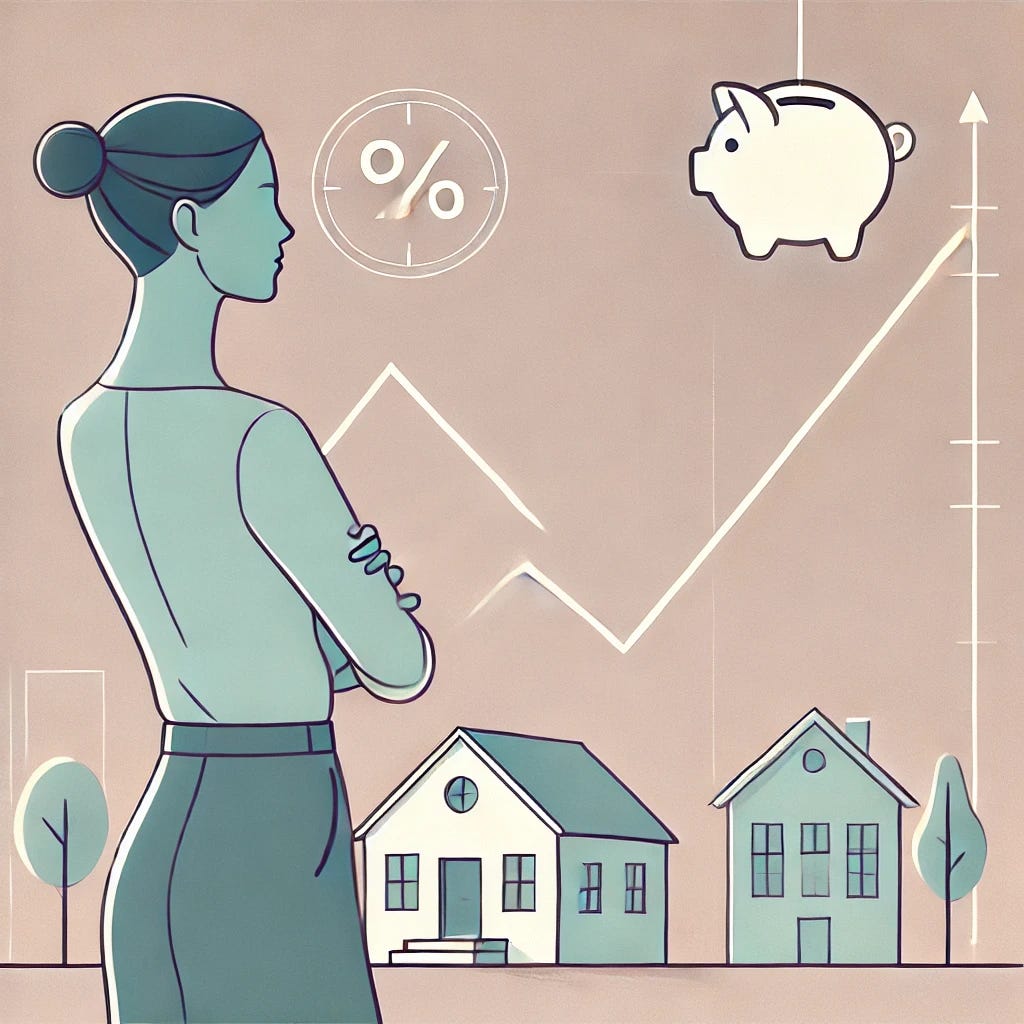Wealth Whisperings: The Impact of Fed Rates Cuts on Your Wallet.
There's good news and bad news when it comes to Fed rate cuts. The good news is that, eventually, the rates that affect us consumers—mortgage, credit card, and car loan rates—will start to come down. It doesn’t happen overnight, but it happens. Lower rates mean borrowing money becomes cheaper, making loans more affordable and easier to pay back. If you're someone who buys big-ticket items (like cars, houses, or even that boat you’ve been eyeing), you’ll pay less in interest on loans. For those with credit card balances (though I’d advise not to make a habit of carrying those), lower rates offer some welcome relief.
In the last five years, mortgage rates have been on a wild ride. From 2019 to 2021, 30-year fixed mortgage rates hit historic lows, with rates dipping as low as 2.65% in 2021. This was largely due to the Fed slashing rates to stabilize the economy during the COVID-19 pandemic. But by 2022, inflation was surging, and the Fed responded by aggressively hiking rates. Mortgage rates climbed steadily, surpassing 7% by the end of 2022. At their peak in 2023, rates reached 7.52%, but have recently come down slightly to around 6.9%.
Now, here's why that matters: The difference between a mortgage rate of 2.65% and 7.52% is significant. On a $500,000, 30-year fixed-rate mortgage, your monthly payment at 2.65% would be about $2,104.82. At 7.52%, it jumps to $3,502.92! Over the life of the loan, you’d pay around $535,717 more in interest at the higher rate—enough to buy another house in some places!
As with most things in life, timing is everything. If you were lucky enough to buy or refinance between 2019 and 2021, you likely locked in an enviable mortgage rate under 3%. In fact, one in five American homeowners with mortgages have an interest rate that low. But for those looking to buy or refinance now, the story is different. With rates north of 6%, many potential buyers who would have qualified for loans just a few years ago are priced out of the market. Additionally, those with low-rate mortgages are reluctant to sell their homes, knowing they’d face much higher payments on their next mortgage. This has serious implications for the housing market, creating a shortage of homes for sale and driving prices even higher.
On the flip side, higher rates do offer one benefit: better returns on your savings. But here's the catch—traditional banks are notoriously stingy when it comes to passing on these higher rates to savings account holders. If you’re parking significant amounts of cash in a standard savings account, you’re missing out. Higher rates are a great opportunity to move your cash into a money market fund, a CD, or even a Treasury bill, where you can earn much more while still keeping your money safe.
As rates start to come down again, now might be the time to "lock in" higher savings rates before they drop further. Consider locking in returns through CDs, Treasury bills, or, if you’re willing to take a bit more risk, by buying bonds.
Conclusion: Timing is Everything
Interest rates move in cycles, reflecting broader economic trends. Whether you’re borrowing or saving, paying attention to these shifts can help you take advantage of favorable conditions. When rates are low, it’s a great time to lock in a good deal on a mortgage or loan. When rates are high, it’s wise to secure better returns on your savings. By being aware of where we are in the economic cycle, you can make smarter financial moves and get the best rates—whether you’re borrowing or saving.



Good read 👏🏽